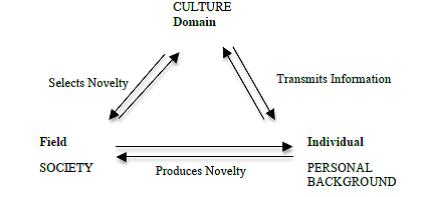The project integrates methods and approaches from three different disciplines: the arts, cultural studies and technology
Following Henk Borgdorff in The debate on research in the arts, we would like to differentiate art research from current academic and scientific research by posing an ontological, an epistemological and a methodological question.
„The ontological question is: What is the nature of the object, of the subject matter, of the research in the arts? […] And in what respect does it thereby differ from other scholarly or scientific research?“ (Borgdorff 2006)
"They speak in layered..." by Barbara Lüneburg inspired by the what if?-community
Firstly, with the arts project TransCoding we embrace the final artwork as well as the process of producing art: the gathering of inspiration, the communication and artistic exploration. We understand our arts practice as performative meaning that the artwork as well as the creative process will stir us (and our participatory community) and will modify how we understand and reflect the world; thus it will do something to us, it will perform us and we will perform through it coming from a material to an immaterial level. Thus, it intrinsically has its own status in comparison to scientific, sociological or historical facts.
Secondly, artistic practices are always embedded in a context, they are never detached of society or time. In TransCoding we put an emphasis on the situation and on the community, the outcome of the interrelation between community and art will flow into the art’s body. The artwork will hold not only our experiences and beliefs but it will reflect and confront its own roots in community and society.
The epistemological question: „With what kind of knowledge and understanding does research in the arts concern itself? And how does that knowledge relate to more conventional forms of scholarly knowledge?“

Systems Model of Creativity by Csikszentmihalyi (Csikszentmihalyi 1999/2008, 315)
First of all, research in art concerns itself with knowledge that is embodied in art be it the artwork or the process that leads to the artwork. What are the points of reference to judge creativity and art?
Csikszentmihalyi’s systems model of creativity includes the environment in which the individual works. He states that creativity involves an individual (the artist), social (the field) and cultural (the domain) part; creativity happens at the point where they intersect.
Secondly, artistic practices are always embedded in a context, they are never detached of society or time. In TransCoding we put an emphasis on the situation and on the community, the outcome of the interrelation between community and art will flow into the art’s body. The artwork will hold not only our experiences and beliefs but it will reflect and confront its own roots in community and society.
The methodological question:
„What research methods and techniques are appropriate to research in the arts? And in what respect do these differ from the methods and techniques in the natural sciences, the social sciences and the humanities?“ (Borgdorff 2006)
In TransCoding we consciously embed the process of conceiving art into the field via participatory culture, thereby expanding the field to a much wider community than usually experienced in the domain of contemporary music. By participant observation, we will gather information on the perspectives and the interplay within and with our focus group and get an overview of issues that are of concern to our target group.
Epistemological insight into the creative process and the knowledge embodied in the artwork can also be gained by tracing what psychologist Keith Sawyer’s calls the “Four-Stages-of-Creativity-Approach”.
We will follow, document and analyse the stages of creativity in our own work basing our research on empirical experience and inductive reasoning. A qualitative research approach seems the most appropriate since it allows us to investigate different factors in the process of participation, communication (sociologically and through the arts) and dissemination, discover what they depend on and inquire into meaning. Sociology and practice based arts research will interrelate and research methods will intersect.
Here the main focus lies on the analysis of existing practices of participatory culture, if and how those findings can be transferred to this arts project, and in what way an „anonymous“ community and artists will interact, exchange and communicate. Connected with these topics, questions of authorship, collaborational creativity and artistic identity as well as curation, hierarchy and access to technical means of arts production will be of interest to us.

Visitors to what-ifblog.net in numbers, December 2015
Software programmers contributed to the project in several ways.
The audio-visual installation is developed out of the contributions and conclusions drawn from the joint artistic and online community. The installation is used as a means to reflect on different realities or concepts of identity that might have evolved out of the participatory community. For the installation we used an "OpenFrameworks"-patch to visualize the chosen texts of our community members.
Part of the research was about bringing the software and algorithm from a fragile research state, to a point where specialised knowledge about computer vision and software development in general is not necessary in order to set up and use the software. The sensor technology we use is based on common Arduino-technology"; we implemented the software using a free software/copyleft license (GPL) which is suitable for a participatory culture use. We have developed a shippable and stabile user interface to be readily used by our community for exhibition purposes.